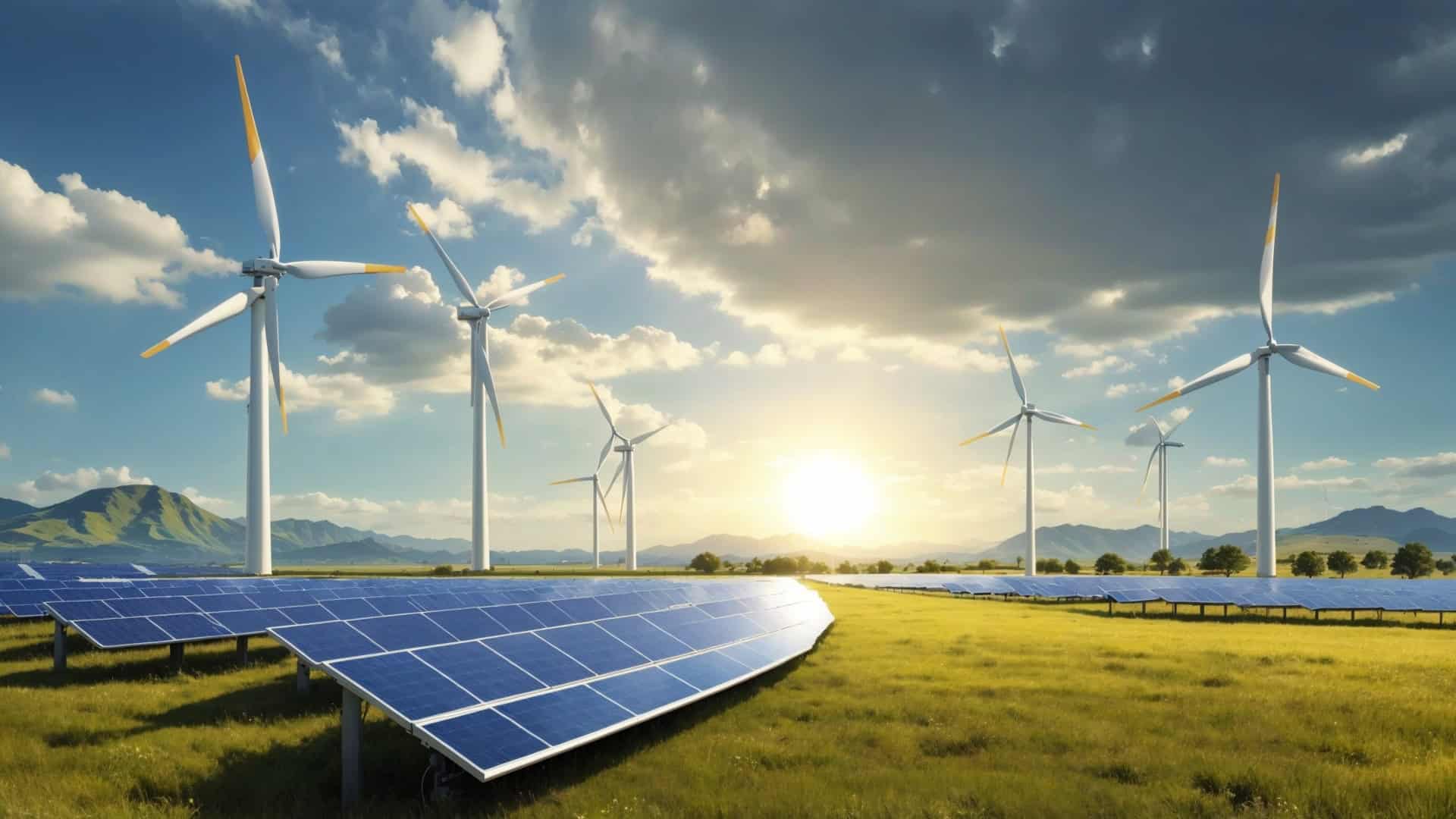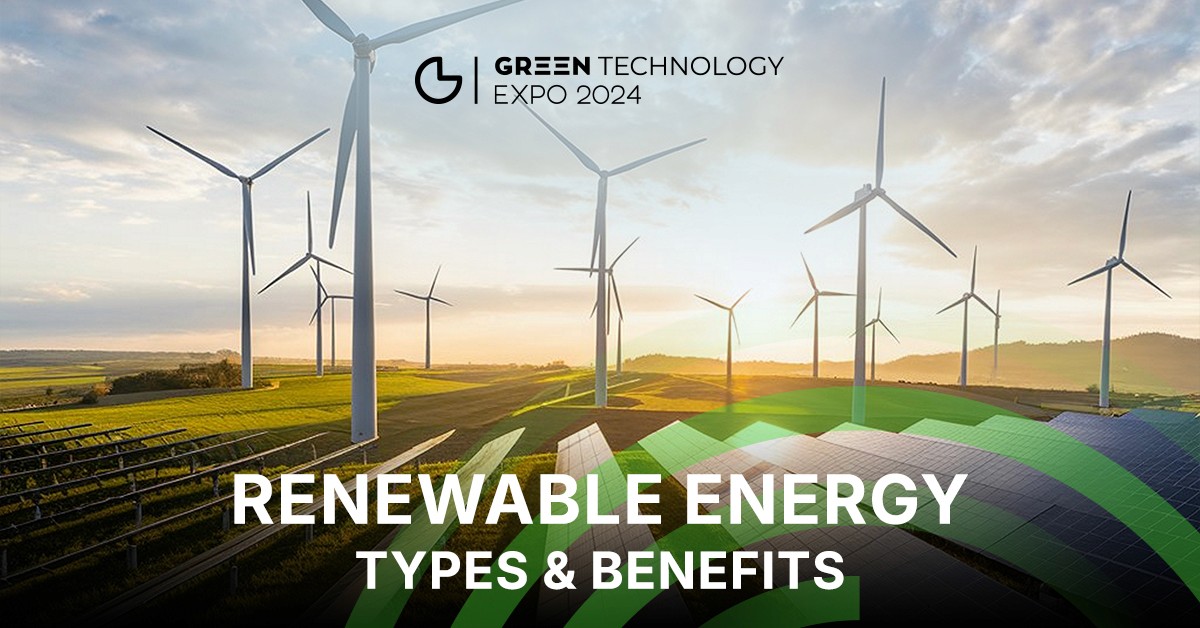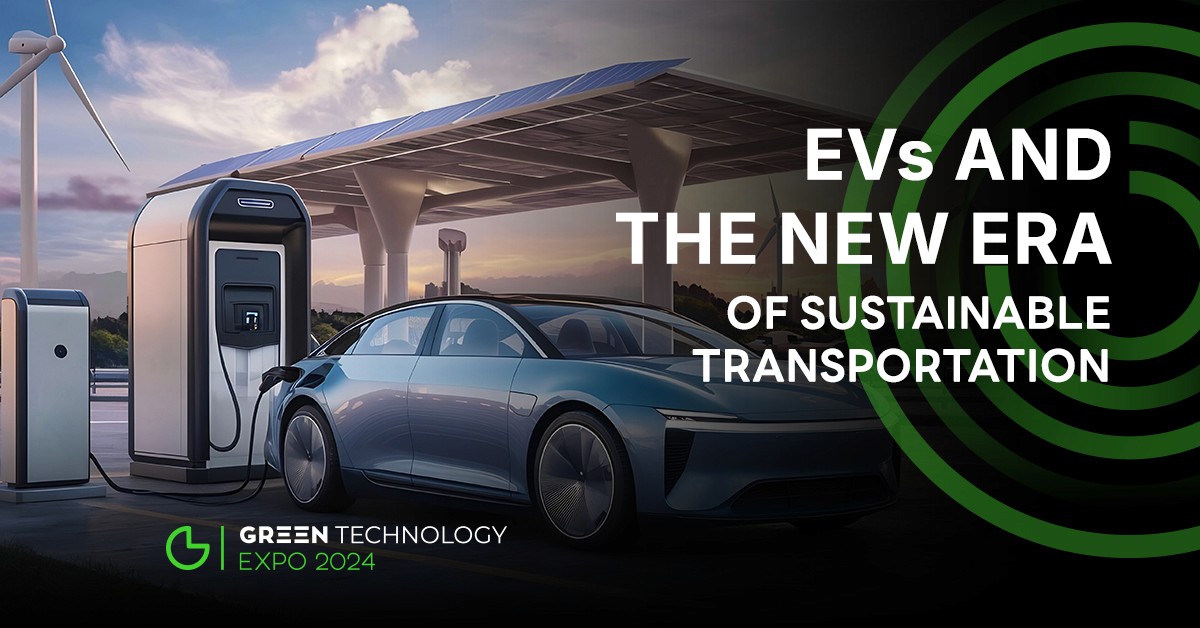Renewable Energy I Types & Benefits
Oct 22, 2024
Renewable energy is increasingly recognized as the cornerstone of a sustainable future, offering clean and inexhaustible power sources. Unlike fossil fuels, renewable energy sources produce minimal greenhouse gas emissions, making them critical in combating climate change and preserving natural ecosystems. As global energy demand rises, a shift towards renewable solutions can help balance environmental needs and economic growth.
What Is Renewable Energy?

Renewable energy refers to power derived from natural resources that are constantly replenished, such as sunlight, wind, water, and geothermal heat. It plays a pivotal role in reducing environmental damage and addressing climate change. Unlike traditional energy sources, renewable energy offers a sustainable solution, aligning with global efforts to lower carbon emissions, promote cleaner air, and achieve long-term energy security.
A key aspect of understanding renewable energy is comparing it with traditional sources, often termed "renewable energy vs. fossil fuels." This comparison highlights the significant differences in sustainability, environmental impact, and economic effects:
Renewable Energy vs. Fossil Fuels
Resource Availability
Fossil fuels are non-renewable, meaning they come from finite reserves of coal, oil, and natural gas, formed over millions of years from organic matter. As fossil fuel reserves are gradually exhausted, extraction becomes costlier and more damaging to the environment.
In contrast, renewable energy is derived from sources that are naturally replenished on a human timescale. Sunlight, wind, water, and geothermal heat are abundant and constantly renewed by Earth’s natural cycles, ensuring a sustainable energy supply for future generations.
Environmental Impact
Fossil fuels are one of the largest contributors to greenhouse gas emissions, especially carbon dioxide (CO₂), which drives global warming. Burning fossil fuels releases other pollutants, like sulfur dioxide and nitrogen oxides, leading to air pollution, acid rain, and health problems such as respiratory diseases. Additionally, the extraction and transportation of fossil fuels often result in land degradation, oil spills, and water contamination.
Conversely, renewable energy sources produce minimal emissions during operation. Solar panels, wind turbines, and hydropower plants generate electricity without burning fuel, significantly reducing air and water pollution. Even geothermal and bioenergy, while having some emissions, have a much smaller carbon footprint compared to fossil fuel plants.
Economic Viability
The cost of renewable energy has fallen significantly over the past decade due to technological advancements, making it competitive with fossil fuels. Once installed, renewable energy systems like solar and wind require minimal operational costs, as sunlight and wind are free resources.
In contrast, fossil fuel prices are volatile, often influenced by geopolitical tensions, market demand, and supply constraints. This volatility can lead to unpredictable energy costs and economic instability. Moreover, renewable energy investments often create more jobs than fossil fuel industries, supporting a cleaner and more resilient economy.
Energy Security and Independence
Reliance on fossil fuels often makes countries vulnerable to supply disruptions, price shocks, and geopolitical conflicts. In contrast, renewable energy enhances energy security by diversifying energy sources and reducing dependence on imported fuels. Countries that invest in renewable energy infrastructure, such as solar farms, wind parks, and hydroelectric dams, benefit from greater energy independence and stability, as the energy is produced locally and is not subject to global market fluctuations.
Technological Advancements and the Future of Energy
The transition from fossil fuels to renewable energy is driven by both environmental necessity and technological progress. Innovations in renewable energy technology, such as more efficient solar panels, larger wind turbines, and advanced battery storage, have made renewable sources more reliable and capable of meeting global energy demands. This shift not only helps in reducing emissions but also supports a broader strategy for sustainable development. The future of energy is increasingly linked to the adoption of green technology, where renewable sources play a central role in achieving carbon neutrality.
In essence, the comparison between renewable energy and fossil fuels emphasizes a clear path toward a more sustainable, cleaner, and economically stable energy landscape. Renewable energy not only reduces environmental harm but also offers a more reliable and affordable source of power that supports both the planet and the economy.
Types of Renewable Energy
Renewable energy encompasses a variety of sources, each with unique benefits and potential applications. Here’s a deeper look at the key types and their distinct advantages:
Wind Power
Wind power harnesses the natural energy of wind currents to generate electricity through turbines. It’s one of the fastest-growing energy sources globally, recognized for its efficiency and low environmental impact. The wind energy advantages are clean, renewable, and reducing dependence on fossil fuels.
Benefits of Wind Energy:
Clean and Green: Produces no air pollutants or greenhouse gasses.
Cost-effective: Wind energy is becoming cheaper, making it competitive with fossil fuels.
Job Creation: Development of wind energy infrastructure boosts local economies and creates jobs.
Sustainable: Wind is a free, inexhaustible resource, making it a reliable energy source.
Sun Power (Solar Energy)
Solar energy harnesses the sun’s rays to generate electricity through photovoltaic (PV) panels or concentrated solar power (CSP) systems. It is one of the most accessible and rapidly growing forms of renewable energy, widely used in residential, commercial, and industrial applications. As a versatile energy source, solar power can be deployed on rooftops, in open fields, or as part of larger solar farms, making it a flexible option for various energy needs.
Solar Energy vs. Fossil Fuels
Solar energy stands out as a cleaner, more sustainable alternative to fossil fuels. While fossil fuels like coal, oil, and natural gas release significant amounts of CO₂ and other pollutants during combustion, solar energy produces no emissions during operation. Fossil fuels are finite and subject to depletion, leading to potential scarcity and price fluctuations.
Conversely, sunlight is abundant, free, and available almost everywhere, making solar energy more stable and predictable in terms of costs. Additionally, the installation of solar systems can enhance energy independence, reduce utility bills, and require minimal maintenance over time, while fossil fuels often come with higher operational and environmental costs.
Benefits of Solar Energy:
Abundant Resource: Sunlight is available everywhere, making it a highly accessible energy source.
Reduces Electricity Bills: Solar panels help homeowners and businesses save money on energy costs.
Low Maintenance: Solar panels require minimal maintenance once installed.
Environmentally Friendly: No harmful emissions, reducing the carbon footprint compared to fossil fuels.
Geothermal Energy
Geothermal energy is derived from the Earth's internal heat. It’s a stable and reliable energy source, often used for heating, electricity generation, and industrial processes.
Benefits of Geothermal Energy:
Consistent Power Supply: Unlike solar or wind, geothermal energy is available 24/7, unaffected by weather conditions.
Minimal Land Footprint: Geothermal power plants occupy less land compared to solar farms or wind turbines.
Low Emissions: Emission levels are significantly lower than those from fossil fuels.
Energy Independence: Countries with geothermal resources can reduce reliance on imported energy.
Biofuel
Biofuels are produced from organic materials, including plant matter and animal waste. They are commonly used as an alternative to gasoline and diesel in transportation.
Benefits of Biofuel:
Renewable Source: Made from readily available organic materials, biofuels reduce waste and support recycling.
Lower Greenhouse Gas Emissions: Compared to fossil fuels, biofuels produce fewer emissions.
Supports Rural Economies: Biofuel production creates agricultural jobs and supports local communities.
Diverse Applications: Biofuels can be used in various industries, from transportation to power generation.
Example of Biofuel Use:
Ethanol, a common biofuel, is blended with gasoline to reduce carbon emissions in the transportation sector.
Hydroelectric Power
Hydroelectric power utilizes the energy of flowing water to generate electricity and comes with various hydropower advantages and disadvantages.
Benefits of Hydroelectric Power:
Renewable and Clean: Hydropower produces no direct waste and minimal greenhouse gas emissions.
Flexible Energy Source: Can be adjusted to meet demand by controlling water flow.
Supports Irrigation and Water Supply: Besides generating energy, hydro plants often contribute to irrigation systems.
Energy Storage: Reservoirs can store water, acting as a natural battery to supply electricity when needed.
However, hydropower also has drawbacks. Large-scale projects can cause significant environmental impacts, such as ecosystem disruption, altered water flows, and harm to aquatic habitats. The high initial construction costs, coupled with the risk of reduced energy output during droughts, add to its challenges. Moreover, building large dams can lead to social displacement and changes in land use. Despite these disadvantages, hydropower remains a vital part of the global renewable energy landscape due to its efficiency, dependability, and energy storage capabilities.
Example of Hydroelectric Power:
The Three Gorges Dam in China, one of the largest hydroelectric facilities, generates clean energy for millions of homes.
Keep the World Better with Renewable Energy
Renewable energy is a cornerstone of a sustainable future, not only addressing current environmental challenges but also paving the way for long-term resilience and growth. As the future of renewable energy evolves, continuous advancements in technology, like more efficient solar panels, larger wind turbines, and enhanced energy storage, are making clean energy more reliable and accessible. Governments and corporations worldwide are setting ambitious goals for carbon neutrality, increasing investments in solar, wind, hydropower, and bioenergy projects. This transition fosters energy independence, reduces greenhouse gas emissions, and creates job opportunities, all while ensuring a stable energy supply. By embracing renewable energy, we are not just tackling climate change but actively building a cleaner, healthier, and more prosperous world for future generations.
Together, we can keep the world better by choosing renewable energy—an investment in a cleaner planet, healthier communities, and a sustainable tomorrow.
News
What Is Green Innovation in Business?
Dec 17, 2024
EVs and the New Era of Sustainable Transportation
Dec 3, 2024
Eco-Friendly Technology Trends to Watch for a Greener Future
Nov 19, 2024





